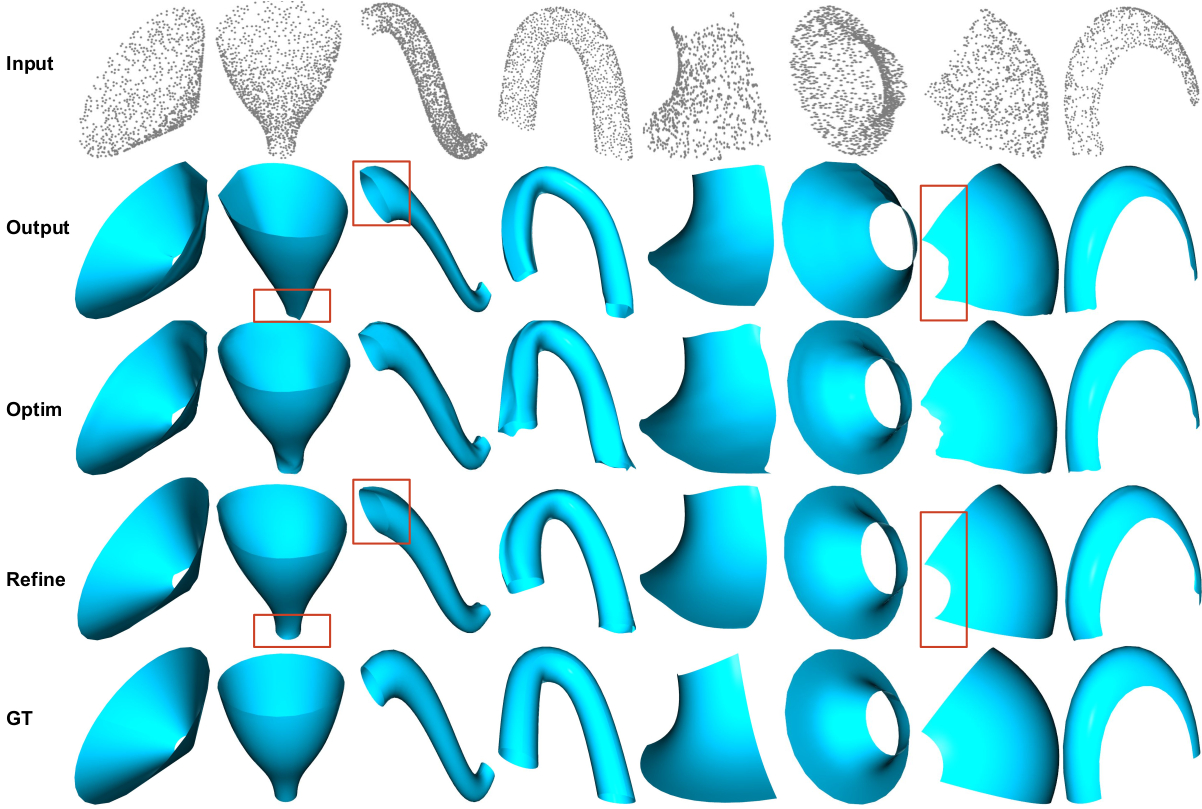parsenet
ParSeNet: A Parametric Surface Fitting Network for 3D Point Clouds
Authors: Gopal Sharma, Difan Liu, Evangelos Kalogerakis, Subhransu Maji, Siddhartha Chaudhuri, Radomír Měch
Paper is published in ECCV 2020.
| Paper | Code and Dataset |

ParSeNet decomposes point clouds (top row) into collections of seamlessly assembled parametric surface patches including B-spline patches (bottom row). On the right, a shape is edited using the inferred parametrization.
Abstract
We propose a novel, end-to-end trainable, deep network called ParSeNet that decomposes a 3D point cloud into parametric surface patches, including B-spline patches as well as basic geometric primitives. ParSeNet is trained on a large-scale dataset of man-made 3D shapes and captures high-level semantic priors for shape decomposition. It handles a much richer class of primitives than prior work, and allows us to represent surfaces with higher fidelity. It also produces repeatable and robust parametrizations of a surface compared to purely geometric approaches. We present extensive experiments to validate our approach against analytical and learning-based alternatives.
Method

Overview of ParSeNet pipeline. (1) The decomposition module takes a 3D point cloud (with optional normals) and decomposes it into segments labeled by primitive type. (2) The fitting module predicts parameters of a primitive that best approximates each segment. It includes a novel SplineNet to fit B-spline patches. The two modules are jointly trained end-to-end. An optional postprocess module refines the output.
Results
Differentiable Spline Fitting

Qualitative evaluation of B-spline fitting. From top to bottom: input point cloud, reconstructed surface by SplineNet, reconstructed surface by \sn with post-processing optimization, reconstruction by SplineNet with control point grid adjustment and finally ground truth surface. Effect of post process optimization is highlighted in red boxes.
Surface Fitting

Given the input point clouds with normals of the first row, we show surfaces produced by SPFN (second row), ParSeNet without post-processing optimization (third row), and full ParSeNet including optimization (fourth row). The last row shows the ground-truth surfaces from our dataset.
Citation
@misc{sharma2020parsenet,
title={ParSeNet: A Parametric Surface Fitting Network for 3D Point Clouds},
author={Gopal Sharma and Difan Liu and Evangelos Kalogerakis and Subhransu Maji and Siddhartha Chaudhuri and Radomír Měch},
year={2020},
eprint={2003.12181},
archivePrefix={arXiv},
primaryClass={cs.CV}
}